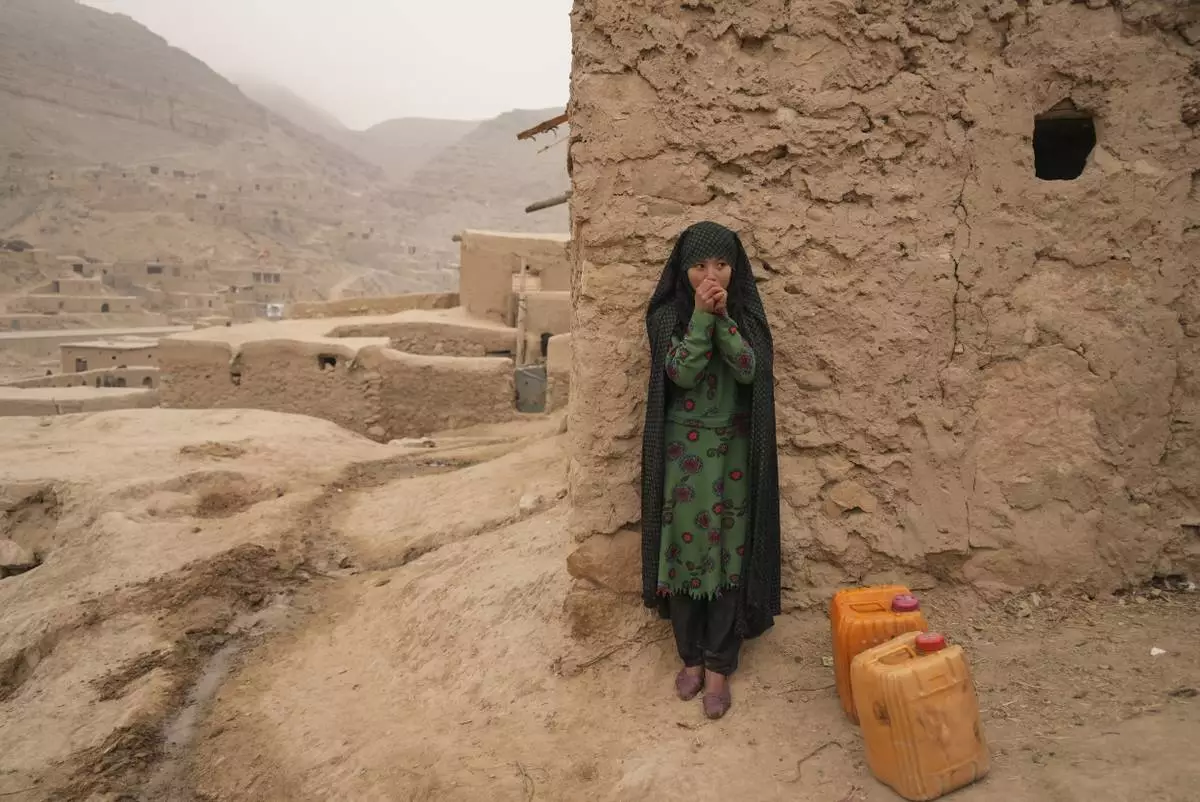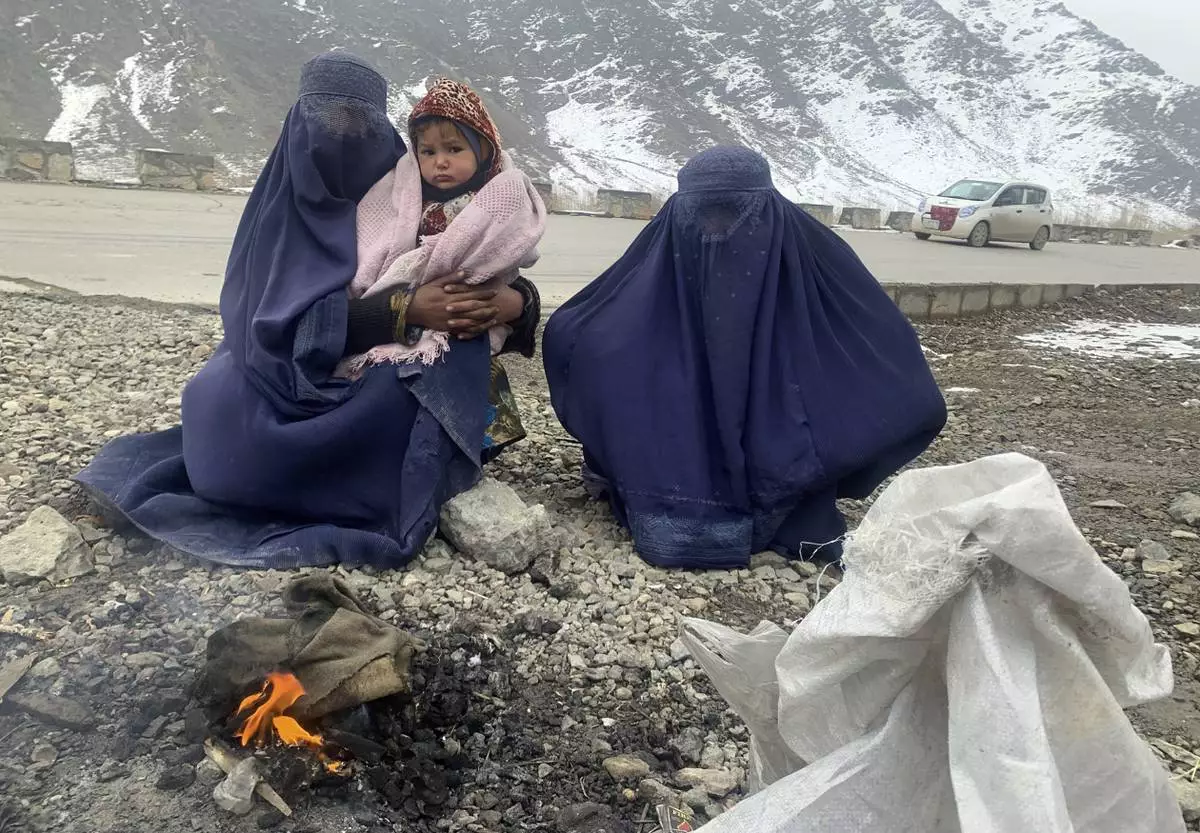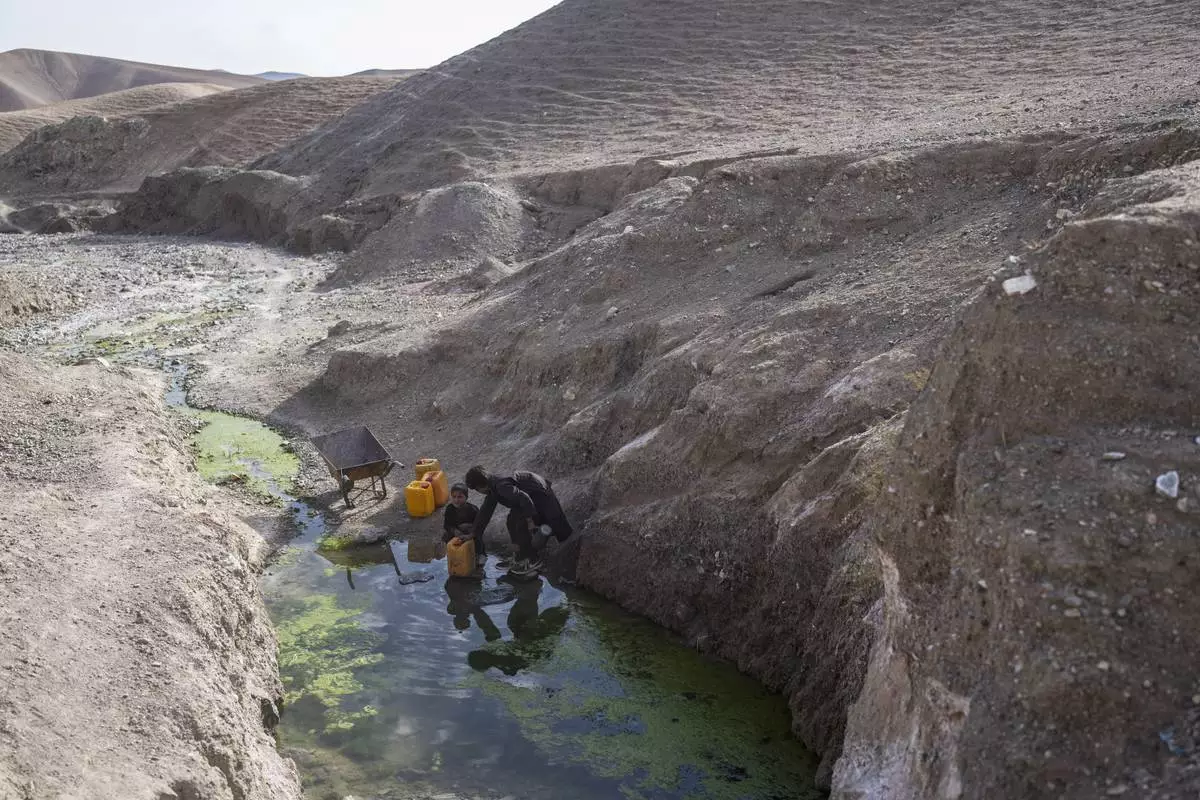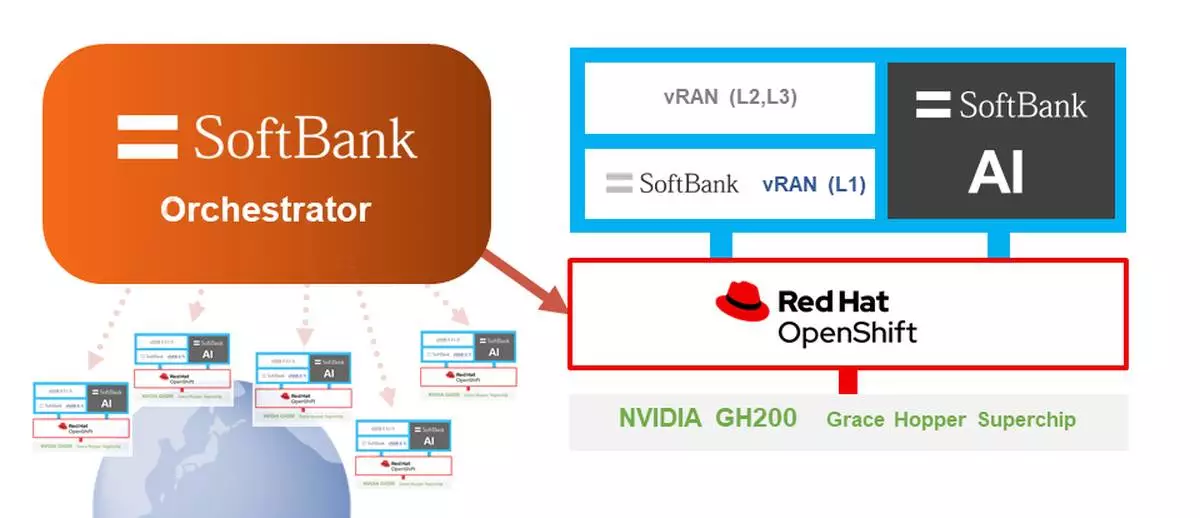KABUL, Afghanistan (AP) — The Taliban will attend a U.N. climate conference for the first time since their takeover of Afghanistan in 2021, the country's national environment agency said Sunday.
The conference, known as COP29, begins Monday in Azerbaijan and is one of the most important multilateral talks to include the Taliban, who do not have official recognition as the legitimate rulers of Afghanistan.
The National Environmental Protection Agency posted on social media platform X that a technical delegation had gone to Baku to participate.
Matiul Haq Khalis, the agency’s head, said the delegation would use the conference to strengthen cooperation with the international community on environmental protection and climate change, share Afghanistan’s needs regarding access to existing financial mechanisms related to climate change, and discuss adaptation and mitigation efforts.
Experts told The Associated Press that climate change has led to numerous and negative impacts on Afghanistan, creating serious challenges because of the country’s geographical location and weak climate policies.
“ Climate change has resulted in higher temperatures, which reduce water sources and cause droughts, significantly affecting agricultural activities,” said Hayatullah Mashwani, professor of environmental science at Kabul University. “The reduction in water availability and frequent droughts pose severe threats to agriculture, leading to food insecurity and challenges to livelihoods.”
In August, the international aid agency Save the Children published a report saying that Afghanistan is the sixth most vulnerable country to the impacts of climate change and that 25 of its 34 provinces face severe or catastrophic drought conditions, affecting more than half the population.
Afghanistan also had the highest number of children made homeless by climate disasters of any country as of the end of 2023, according to the report.
Professor Abid Arabzai, from Kabul University, said the climate conference would help to secure international assistance and funding to address Afghanistan’s climate challenges.
“Afghanistan can clarify its climate actions and commitments to the global community, enhancing its international reputation,” said Arabzai.

FILE - An Afghan girl warms up her hands as she is resting from carrying the water in Balucha, Afghanistan, Monday, Dec. 14, 2021. (AP Photo/Mstyslav Chernov, File)

FILE - A Taliban fighter stands guard as people receive food rations distributed by a Chinese humanitarian aid group, in Kabul, Afghanistan, Saturday, April 30, 2022. (AP Photo/Ebrahim Noroozi, File)

FILE -Gulnaz, left, keep her 18-month-old son warm themselves as they wait for alms in the Kabul - Pul-e-Alam highway eastern Afghanistan, Tuesday, Jan. 18, 2022. (AP Photo/Kathy Gannon, File)

FILE -Two brothers fill canisters with water from a stagnant pool about 3 kilometers (2 miles) from their home in Kamar Kalagh village outside Herat, Afghanistan, Friday, Nov. 26, 2021. (AP Photo/Petros Giannakouris, File)
TOKYO--(BUSINESS WIRE)--Nov 12, 2024--
SoftBank Corp. (TOKYO:9434, “SoftBank”) announced it developed the orchestrator that enables AI applications and vRAN (virtualized Radio Access Network) applications to operate on the same virtualized infrastructure, a key concept of AI-RAN. This advancement enables the deployment of high-capacity, high-performance, and high-quality vRAN at a carrier-grade level on virtualized infrastructure running on GPU (Graphics Processing Unit) computing, including the NVIDIA GH200 Grace Hopper Superchip platform. Additionally, the orchestrator enables the integration and provision of various AI applications, such as generative AI, on the same platform.
This press release features multimedia. View the full release here: https://www.businesswire.com/news/home/20241112940159/en/
There are challenges in operating AI and vRAN on the same infrastructure, as service level agreements (SLAs) and server configurations differ depending on the type of workload. To address these challenges, SoftBank developed the orchestrator that enables control over infrastructure settings to meet the specific kernel and requirements of each workload. This solution is expected to deliver a highly operational and cost-effective platform. In addition to AI applications developed by SoftBank, the serverless API powered by NVIDIA AI Enterprise is also integrated with the orchestrator, enabling users to run their own AI applications on the AI-RAN virtualized infrastructure.
AI and vRAN applications have distinct characteristics, requiring simultaneous optimization. For example, vRAN must control radio functions, which demands ultra-low-latency processing, whereas AI applications require efficient memory management for large data volumes and the ability to handle multiple workloads with optimal placement.
To operate such diverse applications on a unified computing platform, SoftBank developed the orchestrator by building a virtualized infrastructure using Red Hat OpenShift. This orchestrator efficiently manages resources, allowing AI and vRAN applications, as well as the orchestrator itself, to run seamlessly on Red Hat OpenShift. As a result, the platform can optimize performance based on real-time resource availability within the virtualized infrastructure.
Key Features of the Orchestrator
Alex Jinsung Choi, Principal Fellow of SoftBank’s Research Institute of Advanced Technology and Chair of the AI-RAN Alliance said, "SoftBank has accumulated extensive experience and expertise as a mobile operator over the years. In the realm of AI-RAN, it is essential to achieve a high-level integration of multiple components, including mobile technology, hardware, AI, network architecture, and virtual infrastructure. The realization of the AI-RAN concept and the development of the orchestrator mark a significant step forward. I am confident that by continuing to advance the development of the orchestrator, we can help address pressing societal challenges."
Chris Wright, Senior Vice President of Global Engineering and Chief Technology Officer, Red Hat, said, "With Red Hat OpenShift, we're enabling a unified foundation that supports both virtualized RAN and AI-enabled applications, giving service providers a consistent and flexible approach to deploying intelligent networks and AI applications. With SoftBank's orchestrator, service providers can optimize delivery of both AI and RAN services on the same OpenShift platform and infrastructure hardware."
Soma Velayutham, Vice President of AI and Telecoms at NVIDIA said, “SoftBank’s successful development of its orchestrator and integration with NVIDIA AI Enterprise helps create an AI marketplace for AI-RAN infrastructure. This bridges the gap between AI supply and demand and opens a multi-billion-dollar revenue opportunity for telcos worldwide for underutilized RAN infrastructure.”
About SoftBank Corp.
Guided by the SoftBank Group’s corporate philosophy, “Information Revolution – Happiness for everyone,” SoftBank Corp. (TOKYO: 9434) operates telecommunications and IT businesses in Japan and globally. Building on its strong business foundation, SoftBank Corp. is expanding into non-telecom fields in line with its “Beyond Carrier” growth strategy while further growing its telecom business by harnessing the power of 5G/6G, IoT, Digital Twin and Non-Terrestrial Network (NTN) solutions, including High Altitude Platform Station (HAPS)-based stratospheric telecommunications. While constructing AI data centers and developing homegrown LLMs specialized for the Japanese language with 1 trillion parameters, SoftBank is applying AI to enhance radio access network performance (AI-RAN) with the aim of becoming a provider of next-generation social infrastructure. To learn more, please visit https://www.softbank.jp/en/


(Graphic: Business Wire)














